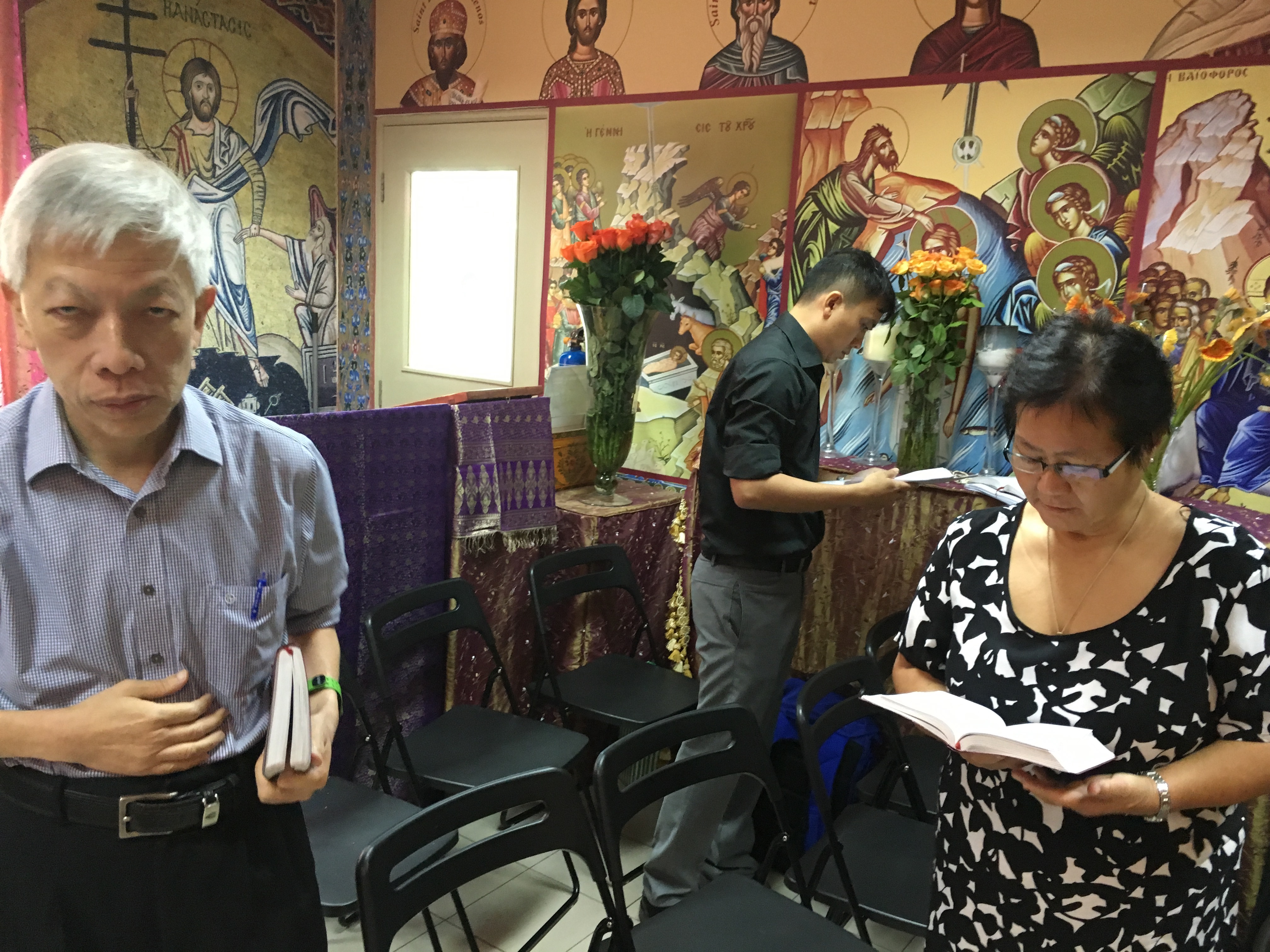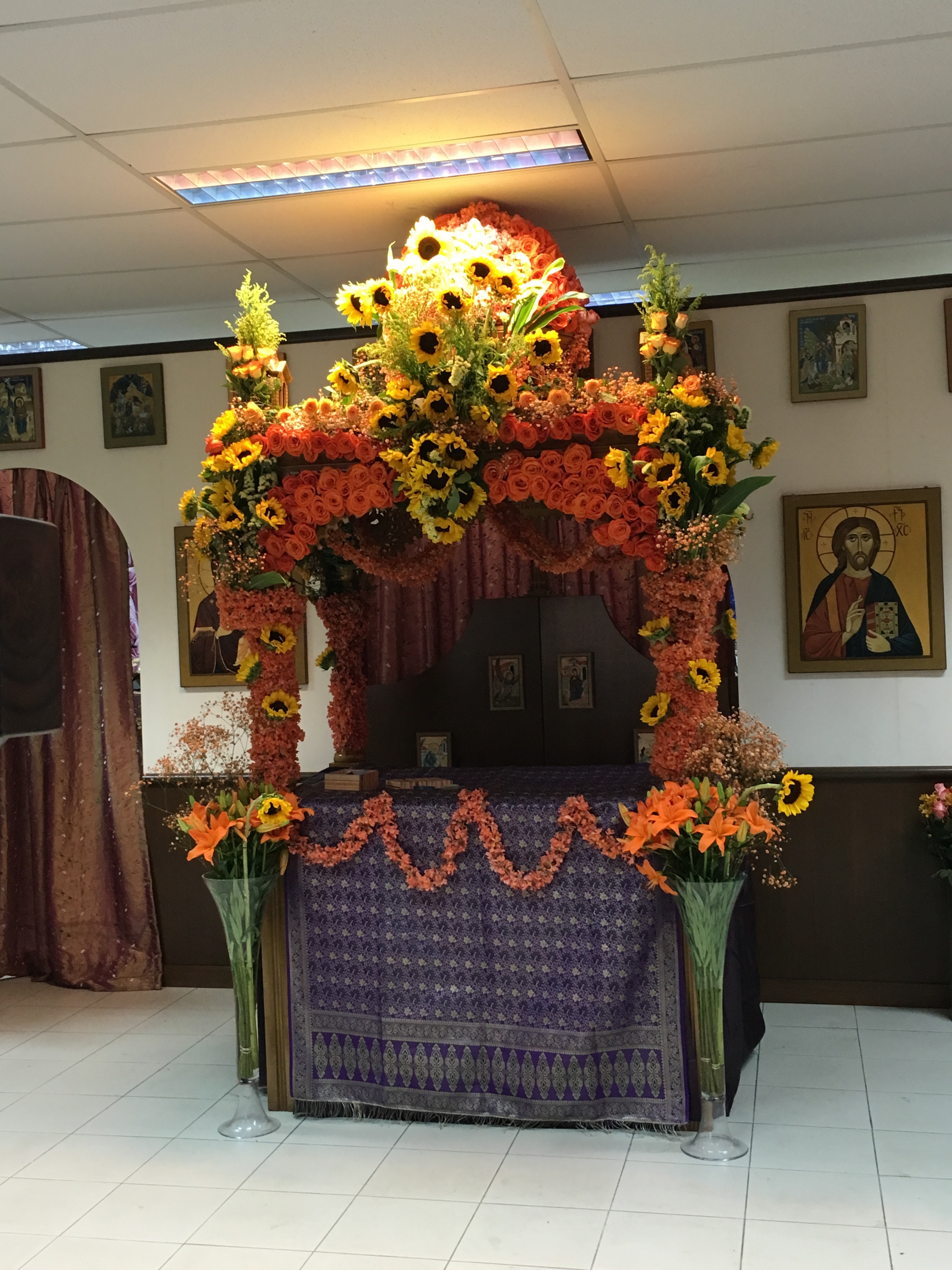On Friday night, the Matins of Holy and Great Saturday, a unique service known as the The Lamentation at the Tomb (Epitáphios Thrēnos) is celebrated. This service is also sometimes called Jerusalem Matins. Much of the service takes place around the tomb of Christ in the center of the nave. A unique feature of the service is the chanting of the Lamentations or Praises (Enkōmia), which consist of verses chanted by the clergy interspersed between the verses of Psalm 119 (which is, by far, the longest psalm in the Bible).
At the end of the Great Doxology, while the Trisagion is sung, the epitaphios is taken in procession around the outside the church, and is then returned to the tomb. Some churches observe the practice of holding the epitaphios at the door, above waist level, so the faithful most bow down under it as they come back into the church, symbolizing their entering into the death and resurrection of Christ.
The epitaphios itself represents the body of Jesus wrapped in a burial shroud, and is a roughly full-size cloth icon of the body of Christ. Then the priest may deliver a homily and everyone comes forward to venerate the epitaphios. In the Slavic practice, at the end of Vespers, Compline is immediately served, featuring a special Canon of the Crucifixion of our Lord and the Lamentation of the Most Holy Theotokos by Symeon the Logothete.






